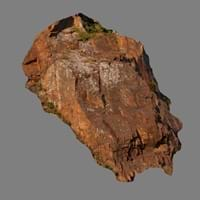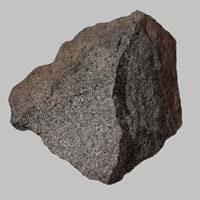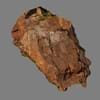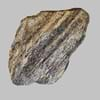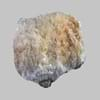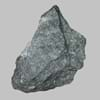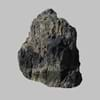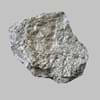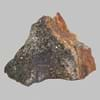Granulite and Pantellerite
Definition
Definition
Granulite is fine to medium grained metamorphic rock with a granular of polygonal crystals.
Pantellerite is a peralkaline rhyolite. It has a higher iron and lower aluminium composition than comendite
History
Origin
Central Europe
Strait of sicily
Discoverer
Unknown
Unknown
Etymology
From Latin granulum, a little grain or fine grained
From Pantelleria, a volcanic island in the Strait of Sicily
Class
Metamorphic Rocks
Igneous Rocks
Sub-Class
Durable Rock, Hard Rock
Durable Rock, Hard Rock
Family
Group
Not Applicable
Volcanic
Other Categories
Coarse Grained Rock, Medium Grained Rock, Opaque Rock
Fine Grained Rock, Opaque Rock
Texture
Texture
Granoblastic
Eutaxitic
Color
Black, Brown
Dark Greenish - Grey
Maintenance
Less
Less
Durability
Durable
Durable
Water Resistant
Yes
Yes
Scratch Resistant
Yes
Yes
Stain Resistant
Yes
Yes
Wind Resistant
No
Yes
Acid Resistant
No
Yes
Appearance
Veined or Pebbled
Layered and Foliated
Uses
Architecture
Interior Uses
Bathrooms, Countertops, Decorative Aggregates, Entryways, Flooring, Homes, Hotels, Interior Decoration, Kitchens, Stair Treads
Not Yet Used
Exterior Uses
As Building Stone, As Facing Stone, Garden Decoration, Office Buildings, Paving Stone
Not Yet Used
Other Architectural Uses
Curbing
Not Yet Used
Industry
Construction Industry
As Dimension Stone, Building houses or walls
NA
Medical Industry
Not Yet Used
Not Yet Used
Antiquity Uses
Artifacts, Monuments, Sculpture
Artifacts, Sculpture
Other Uses
Commercial Uses
Curling, Gemstone, Laboratory bench tops, Soil Conditioner, Tombstones
Creating Artwork
Types
Types
Not Available
Pantelleritic Ignimbrite
Features
Clasts are smooth to touch
High Fe content
Archaeological Significance
Monuments
Used
Not Yet Used
Famous Monuments
Data Not Available
Not Applicable
Sculpture
Used
Not Yet Used
Famous Sculptures
Data Not Available
Not Applicable
Pictographs
Not Used
Not Used
Petroglyphs
Not Used
Not Used
Figurines
Used
Not Yet Used
Fossils
Absent
Absent
Formation
Formation
Granulite is a fine-grained granular metamorphic rock in which the main component minerals are feldspars and quartz and forms at high temperature and pressure conditions.
Pantellerite is a fine-grained, hard rock which is a type of metasomatite, essentially altered basalt. It forms with or without crystallization, either below the surface as intrusive rocks or on the surface as extrusive rocks.
Composition
Mineral Content
Amphibole, Biotite, Feldspar, Hornblade, Micas, Muscovite or Illite, Plagioclase, Quartz
Amphibole, Feldspar, Ilmenite
Compound Content
Aluminium Oxide, CaO, Carbon Dioxide, Iron(III) Oxide, FeO, Potassium Oxide, MgO, MnO, Sodium Oxide, Phosphorus Pentoxide, Sulfur Dioxide, Titanium Dioxide
Al, Fe
Transformation
Metamorphism
No
Yes
Types of Metamorphism
Not Applicable
Burial Metamorphism, Cataclastic Metamorphism
Weathering
Yes
Yes
Types of Weathering
Biological Weathering, Chemical Weathering
Biological Weathering, Chemical Weathering
Erosion
Yes
Yes
Types of Erosion
Chemical Erosion, Water Erosion, Wind Erosion
Chemical Erosion, Coastal Erosion, Glacier Erosion, Sea Erosion, Water Erosion, Wind Erosion
Properties
Physical Properties
Hardness
6-7
6-7
Grain Size
Medium to Coarse Grained
Fine Grained
Fracture
Not Available
Sub-conchoidal
Streak
White
Unknown
Porosity
Very Less Porous
Less Porous
Luster
Vitreous
Earthy
Compressive Strength
175.00 N/mm2
13
Not Available
Cleavage
Imperfect
Conchoidal
Toughness
Not Available
2
Specific Gravity
2.8-3.0
Not Available
Transparency
Opaque
Translucent to Opaque
Density
3.06-3.33 g/cm3
Not Available
Thermal Properties
Specific Heat Capacity
0.14 kJ/Kg K
26
Not Available
Resistance
Heat Resistant, Wear Resistant
Heat Resistant
Reserves
Deposits in Eastern Continents
Asia
China, India, Iran, Saudi Arabia, Sri Lanka, Taiwan, Thailand, Turkey, Vietnam
China, India
Africa
Angola, Egypt, Madagascar, Nigeria, South Africa
Angola, Egypt, Madagascar, Namibia, Nigeria
Europe
Austria, Belgium, Finland, France, Germany, Italy, Norway, Sardinia, Spain, Switzerland, The Czech Republic, Venezuela
Germany, Iceland, Ireland, Italy, Spain, United Kingdom
Others
Not Yet Found
Not Yet Found
Deposits in Western Continents
North America
Canada, USA
Canada, USA
South America
Not Yet Found
Argentina, Bolivia, Brazil, Colombia, Ecuador
Deposits in Oceania Continent
Australia
Not Yet Found
Central Australia, Queensland, Western Australia
All about Granulite and Pantellerite Properties
Know all about Granulite and Pantellerite properties here. All properties of rocks are important as they define the type of rock and its application. Granulite belongs to Metamorphic Rocks while Pantellerite belongs to Igneous Rocks.Texture of Granulite is Granoblastic whereas that of Pantellerite is Eutaxitic. Granulite appears Veined or Pebbled and Pantellerite appears Layered and Foliated. The luster of Granulite is vitreous while that of Pantellerite is earthy. Granulite is available in black, brown colors whereas Pantellerite is available in dark greenish - grey colors. The commercial uses of Granulite are curling, gemstone, laboratory bench tops, soil conditioner, tombstones and that of Pantellerite are creating artwork.
|
||
|
||
|
